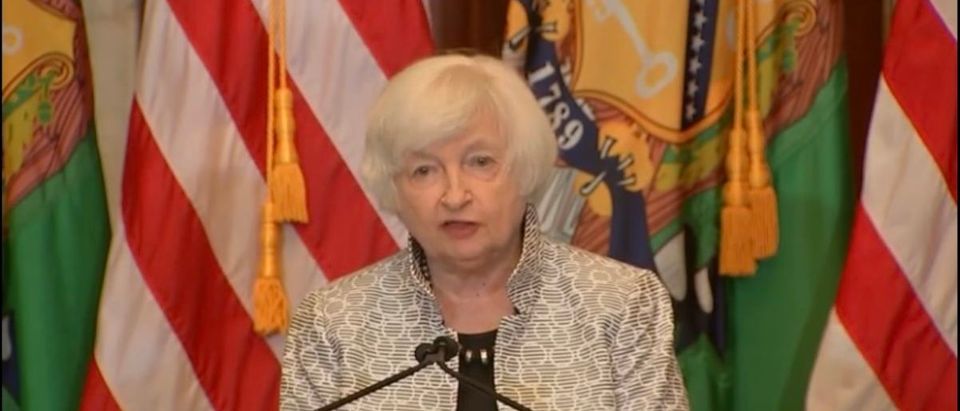Treasury Secretary Janet Yellen said the nation is in a “new phase in our recovery,” despite the Bureau of Economic Analysis (BEA) report showing a decline in GDP.
The report indicated the economy fulfills the standard definition of a recession, due to there being negative GDP growth in two consecutive quarters. Yellen optimistically cited the continual job growth and the low unemployment rate as evidence the country is moving forward, economically.
She said a recession involves job losses, businesses shutting down and family budgets “under immense strain.”
“When you look at the economy, job creation is continuing,” she said. “Household finances remain strong, consumers are spending and businesses are growing.”
WATCH:
Yellen said 1.1 million jobs were created in the last three months and spending rose 3% in the first quarter of this year. She argued the 2% drop in private inventories led to the decline in GDP. (RELATED: Biden: ‘We’re Not Gonna Be In A Recession’)
“Today’s report shows continued expansion in consumer spending overall and in services in particular,” she said. “A notable strength in net exports. Overall, with a slow down in private demand, this report indicates an economy that is transitioning to more steady, sustainable growth. This path is a consistent one that eases inflationary pressures while maintaining the labor market process of the past 18 months.”
She then warned that the economy faces long withstanding risks, such as the war in Ukraine, COVID-19 lockdowns in China and supply chain disruptions caused by the pandemic.
The White House similarly argued the report does not indicate a recession, given there is not a single definition. A July 21 blog post argued the National Bureau of Economic Research (NBER) has indicated there is a “strong growth in the U.S. economy.”
NBER defines a recession as “a significant decline in economic activity that is spread across the economy and lasts more than a few months,” leading the White House to argue that its indicators have found growth in the labor market, incomes, consumer and business spending and industrial production.


